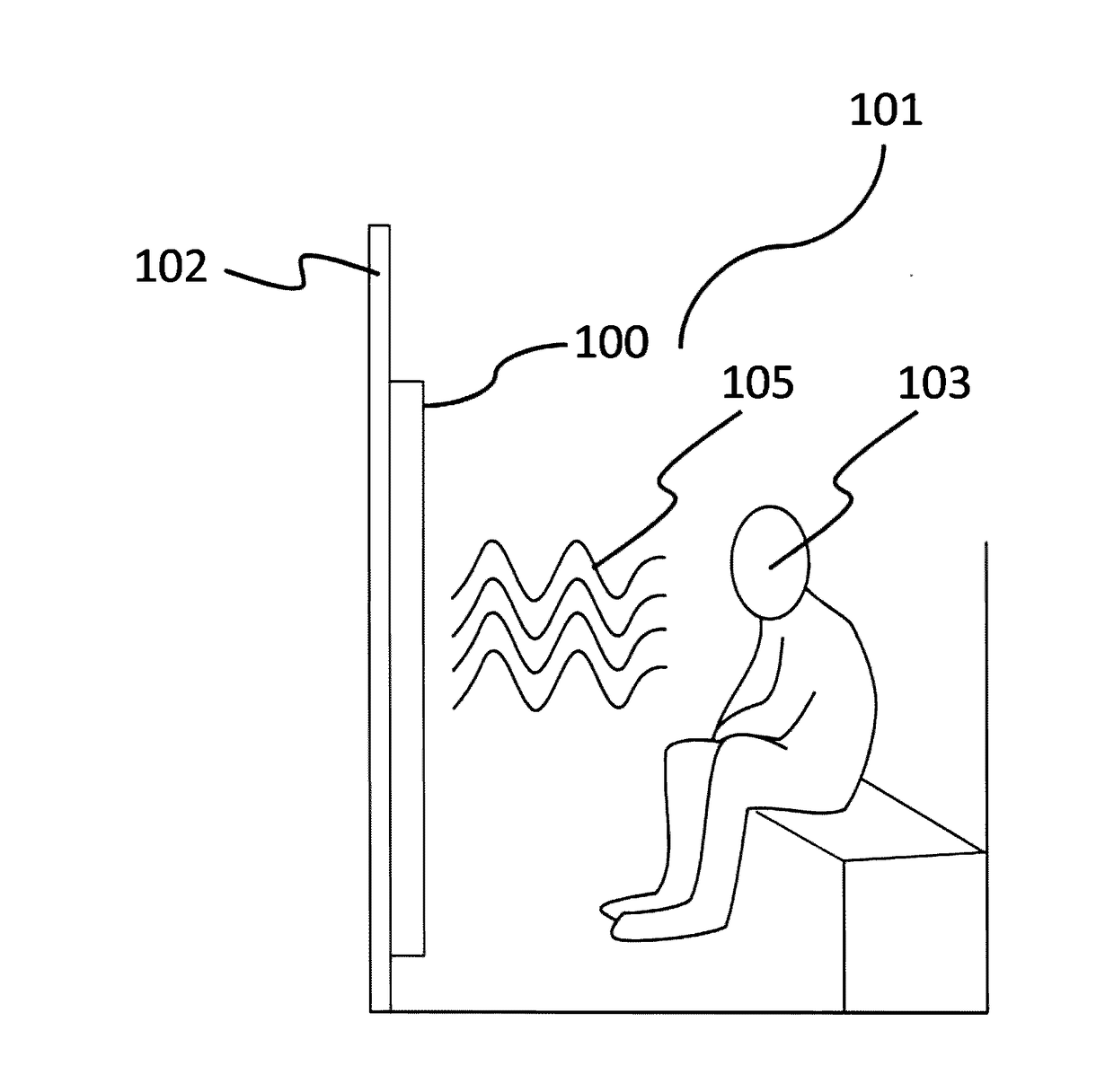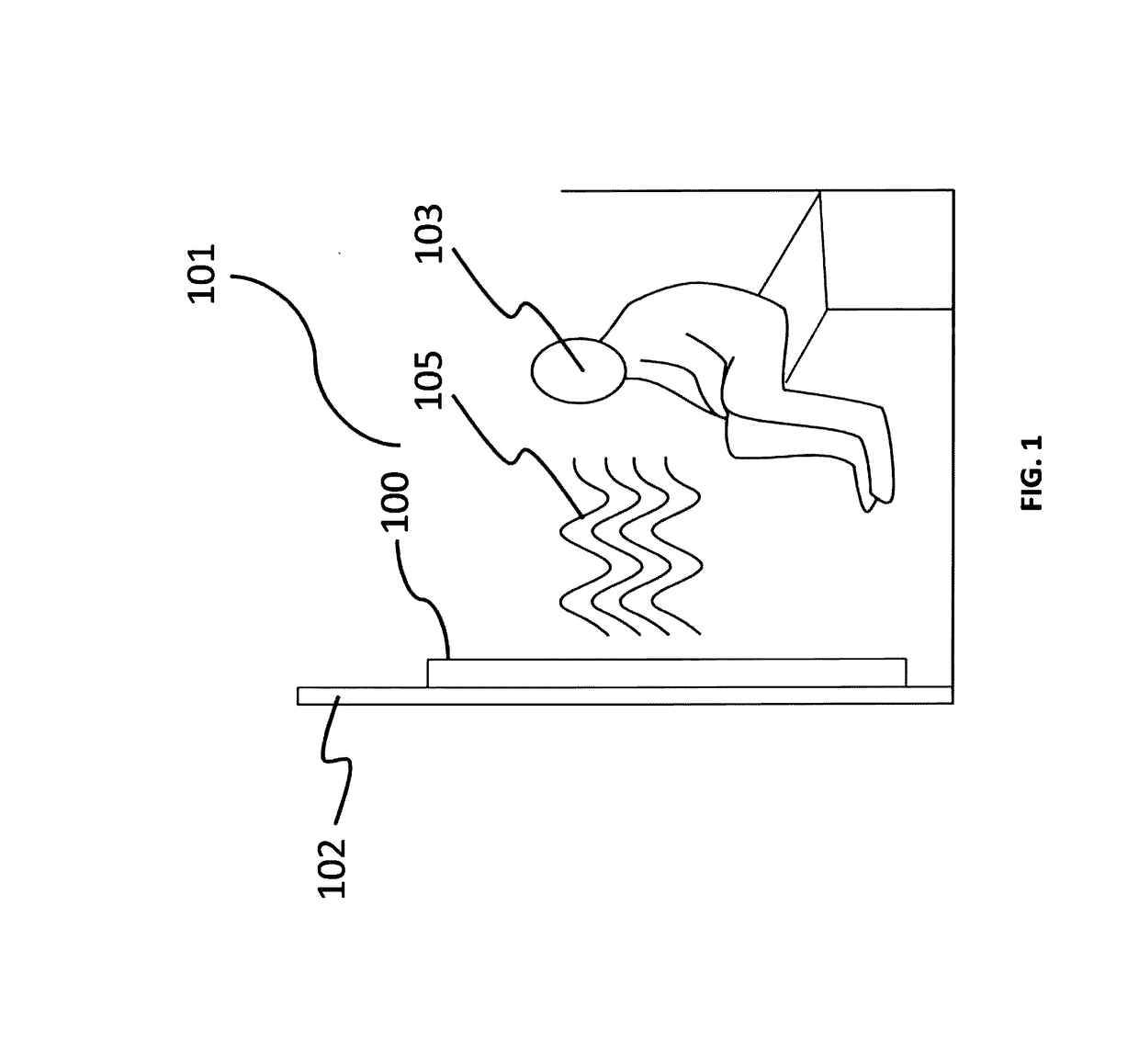Exercise Sauna Having Far Infrared Heating Elements and Configurable Seating
a far infrared heating element and sauna technology, applied in gymnastics, programme control, instruments, etc., can solve the problems of individual sweating, unfavorable use, and inability to move to a different location, so as to facilitate a solution, increase user comfort, and facilitate flexible seating solutions
- Summary
- Abstract
- Description
- Claims
- Application Information
AI Technical Summary
Benefits of technology
Problems solved by technology
Method used
Image
Examples
Embodiment Construction
[0059]Referring initially to FIG. 1, a cut away view of an exemplary IR sauna cabin, generally labeled 101, is depicted showing an individual 103 seated therein. The far infrared (“FIR”) heating element of the present invention, generally labeled 100, is shown installed in wall 102 of sauna cabin 101. The FIR heating element 100 is shown radiating combined FIR energy 105 in order to heat the individual 103 and cause individual 103 to sweat, providing therapeutic benefits, such as resonant absorption of the FIR energy 105 within individual's 103 bodily tissues.
[0060]Referring now to FIG. 2, FIR heating element 100 is depicted, installed in a sauna wall 102. The FIR heating element 100 of the present invention is contemplated herein as a sauna heater, thus it is shown installed in a wooden enclosure 104, however it should be appreciated by those skilled in the art, that the FIR heating element 100 may be used for other purposes or installed in a variety of other enclosures, such as me...
PUM
 Login to View More
Login to View More Abstract
Description
Claims
Application Information
 Login to View More
Login to View More - R&D
- Intellectual Property
- Life Sciences
- Materials
- Tech Scout
- Unparalleled Data Quality
- Higher Quality Content
- 60% Fewer Hallucinations
Browse by: Latest US Patents, China's latest patents, Technical Efficacy Thesaurus, Application Domain, Technology Topic, Popular Technical Reports.
© 2025 PatSnap. All rights reserved.Legal|Privacy policy|Modern Slavery Act Transparency Statement|Sitemap|About US| Contact US: help@patsnap.com



